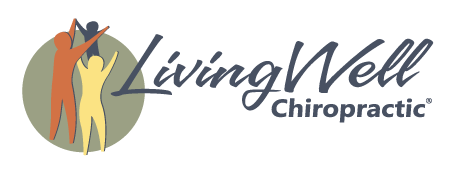How Can Your Sleeping Position & Morning Routine Help Relieve Back Pain
While it is my goal to help my patients as much as possible, I’m not the only person who can help improve your spinal health. I firmly believe that to know better is to do better, so I would like to share my knowledge. There is so much more that you can do on your own to reach your peak physical condition if you are willing to make some small lifestyle changes. This post is the first in a series that will detail these tips.
Let’s begin with a simple question: what do humans spend one-third of our lives doing? The answer is sleeping. Considering this, it isn’t surprising that the position we sleep in can have a great impact on our spines. Another question: what do you think is the best position for sleep? If you answered “on your side” or “on your stomach,” you may want to consider a few things . Besides the fact that sleeping on your stomach provides no back support, it also increases Lordosis (the inward curvature of the lumbar and cervical columns) and pressure on your nerves. In addition, rotating your head to one side to breathe—as you must when sleeping on your stomach—cuts off some of the blood supply to the brain. In fact, sleeping on your back is the best option.
But even if you already do sleep on your back, there are ways to tweak this position to make it even more beneficial for your spine. First, use a pillow that supports your neck and lets your head hang back, perhaps even to the point of touching the bed (if you can handle it). Also, try bending your knees and using a sleeping bag or large pillow to support them. This allows your spine to maintain a proper curve during the nighttime hours. In addition, if you snore, it opens the airways and your chance of snoring greatly decreases. Try sleeping this way for at least three weeks (the amount of time it takes to create a habit), and if you find that you cannot get adequate sleep while on your back, then move to your side.
When sleeping on your side, make sure that you don’t find your arm beneath your pillow to prop your head up. If you do, this means that your pillow isn’t thick enough. Your elbow should not be higher than your shoulder when sleeping. If you don’t believe me, try this: when you’re sitting or standing, try raising your elbow above your shoulder and see what a strange position this puts your body in, and then imagine holding it there for hours on end. Clearly, this is not an ideal position for the muscles and bones of your spine/shoulders. While you sleep on your side, your head should be propped up to its natural resting position from the shoulder to the neck, not any higher or lower. To prevent rotation of the hips, sleep with a pillow between your knees to keep the hips even and level with one another.
Make sure that, above all, your mattress has adequate low back support. This means no air mattresses or waterbeds and no thick pillow-tops. Mattresses should be firm and flat.
Continuing on a traditional daily routine, you should pay more attention to the way you get out of bed in the morning. When you’ve been sleeping for 6-9 hours, your muscles must be warmed up and stretched before you can expect them to function at their full capacity, just as you would warm up before a workout. Try this stretch routine the next time you wake up, rather than hopping right out of bed. First, lie on your back. Then, repeat the following exercises three times each:
● Point your toes.
● Raise your arms so that they are straight in front of you, point your fingertips and reach forward as far as you can while still keeping your back on the bed, then bring your arms back.
● Bring one knee to your chest, then the other, and then bring them both to your chest together.
● Roll to your side, push yourself up sideways (rather than doing a sit-up), and carefully swing your legs so that your feet are on the floor.
Once we’re out of bed, usually the first thing we do is head to the bathroom and brush our teeth. How do you brush yours? Do you stand bent over the counter? If you do, try this instead: place one foot in front of the other, bend (engaging your abdominals), place your forearms on the counter, and use your wrist to brush your teeth rather than your arm. Doing this helps decrease the chance of pulling a muscle or injuring a disc before your body has had a chance to stretch fully.
As I said previously, this is only the first in a series of posts that will address the ways that you can improve your spinal health on your own. Keep an eye out for the next, which will focus on the lifestyle changes you can make during the day—at work, at home, and everywhere you go!



